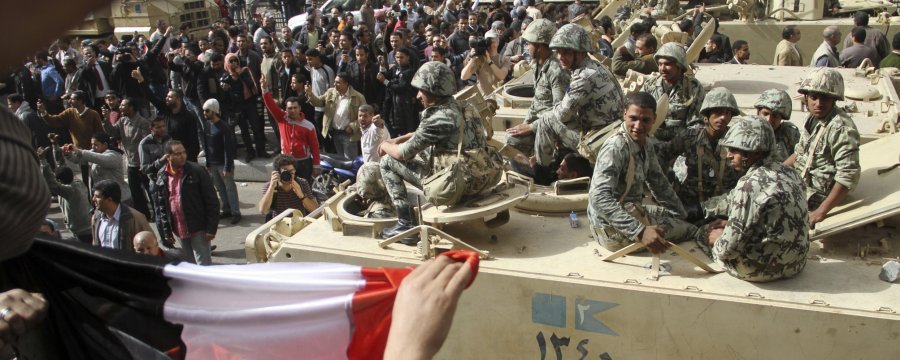The “March of Millions” in Cairo marks the spectacular emergence of a new political society in Egypt. This uprising brings together a new coalition of forces, uniting reconfigured elements of the security state with prominent business people, internationalist leaders, and relatively new (or newly reconfigured ) mass movements of youth, labor, women’s and religious groups. President Hosni Mubarak lost his political power on Friday, 28 January. On that night the Egyptian military let Mubarak’s ruling party headquarters burn down and ordered the police brigades attacking protesters to return to their barracks. When the evening call to prayer rang out and no one heeded Mubarak’s curfew order, it was clear that the old president been reduced to a phantom authority. In order to understand where Egypt is going, and what shape democracy might take there, we need to set the extraordinarily successful popular mobilizations into their military, economic and social context. What other forces were behind this sudden fall of Mubarak from power? And how will this transitional military-centered government get along with this millions-strong protest movement?

Many international media commentators – and some academic and political analysts – are having a hard time understanding the complexity of forces driving and responding to these momentous events. This confusion is driven by the binary “good guys versus bad guys” lenses most use to view this uprising. Such perspectives obscure more than they illuminate. There are three prominent binary models out there and each one carries its own baggage: (1) People versus Dictatorship: This perspective leads to liberal naïveté and confusion about the active role of military and elites in this uprising. (2) Seculars versus Islamists: This model leads to a 1980s-style call for “stability” and Islamophobic fears about the containment of the supposedly extremist “Arab street.” Or, (3) Old Guard versus Frustrated Youth: This lens imposes a 1960s-style romance on the protests but cannot begin to explain the structural and institutional dynamics driving the uprising, nor account for the key roles played by many 70-year-old Nasser-era figures.
This article is now featured in Jadaliyya`s edited volume entitled Dawn of the Arab Uprisings: End of An Old Order? (Pluto Press, 2012). The volume documents the first six months of the Arab uprisings, explaining the backgrounds and trajectories of these popular movements. It also archives the range of responses that emanated from activists, scholars, and analysts as they sought to make sense of the rapidly unfolding events. Click here to access the full article by ordering your copy of Dawn of the Arab Uprisings from Amazon, or use the link below to purchase from the publisher.
